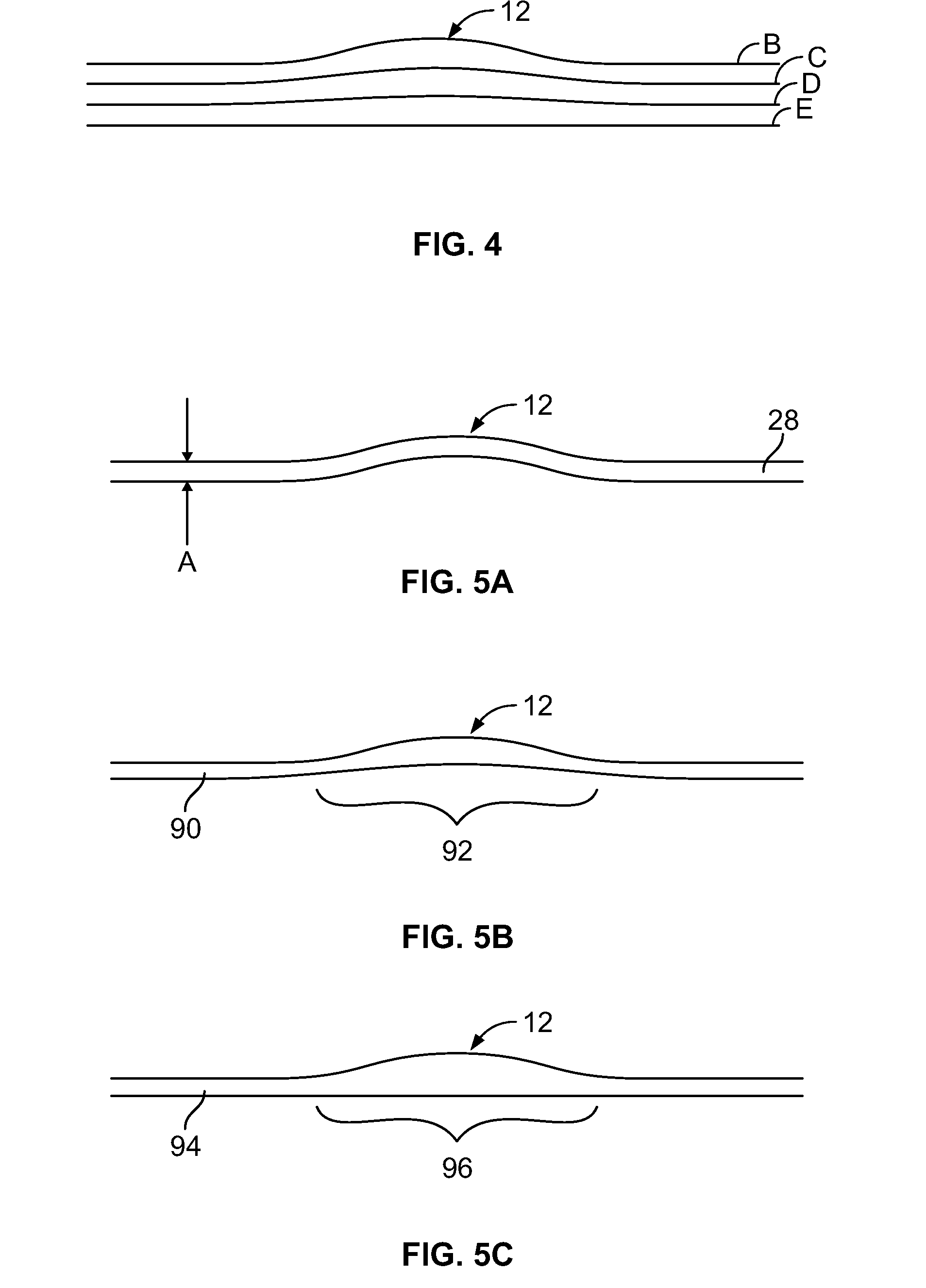Stent device for anastomoses of blood vessels and other tubular organs
a technology of anastomosis and stent, which is applied in the field of stent devices for anastomosis of blood vessels and other tubular organs, can solve the problems of microvascular surgery using extremely technical processes, affecting patient outcomes, and causing leakage and failure of sutures, so as to facilitate flow through the stent, improve the purchase effect, and reduce the cross-section of the lumen
- Summary
- Abstract
- Description
- Claims
- Application Information
AI Technical Summary
Benefits of technology
Problems solved by technology
Method used
Image
Examples
example 1
[0039] 1. Two blood vessels 90 ad 92 (FIGS. 8A and 8D) with ends of like diameter will be prepared for attachment using known surgical techniques. [0040] 2. A stent 10 will be chosen with nipples 14 and 16 having an outer diameter generally corresponding to the lumens of blood vessels 90 and 92. In an alternative embodiment, the nipples will have an outer diameter slightly greater than the native vessel diameter to produce dilation at the vessel ends. [0041] 3. The first nipple 14 of the stent will be placed within lumen 91 of the first vessel 90 (FIG. 8B) and drawn up onto the stent to approximately the midpoint of enlarged center portion 12, as shown in FIG. 8C. The center-expanded design of the stent thus causes the vessel to drape in expanded form over the stent, providing dilation of the vessel at the point of anastomosis, which minimizes the likelihood of thrombosis and clot formation. [0042] 4. A clamp 94 (illustrated diagrammatically) will then be deployed as shown in FIG. 8...
example 2
[0046] The procedure of Example 1 is followed except that vessels with different diameter lumens are joined using the stent of FIG. 2.
example 3
[0047] The procedure of Example 1 is followed except that vessels with different diameter lumens are joined using the stent of FIG. 3. Additionally, in this case the vessels are too fragile to be pulled to the midpoint of the enlarged center portion of the solid-walled stent being used and so are only pulled up onto ramping walls 58 and 60 an appropriate distance and clamped in place there.
PUM
 Login to View More
Login to View More Abstract
Description
Claims
Application Information
 Login to View More
Login to View More - R&D
- Intellectual Property
- Life Sciences
- Materials
- Tech Scout
- Unparalleled Data Quality
- Higher Quality Content
- 60% Fewer Hallucinations
Browse by: Latest US Patents, China's latest patents, Technical Efficacy Thesaurus, Application Domain, Technology Topic, Popular Technical Reports.
© 2025 PatSnap. All rights reserved.Legal|Privacy policy|Modern Slavery Act Transparency Statement|Sitemap|About US| Contact US: help@patsnap.com



